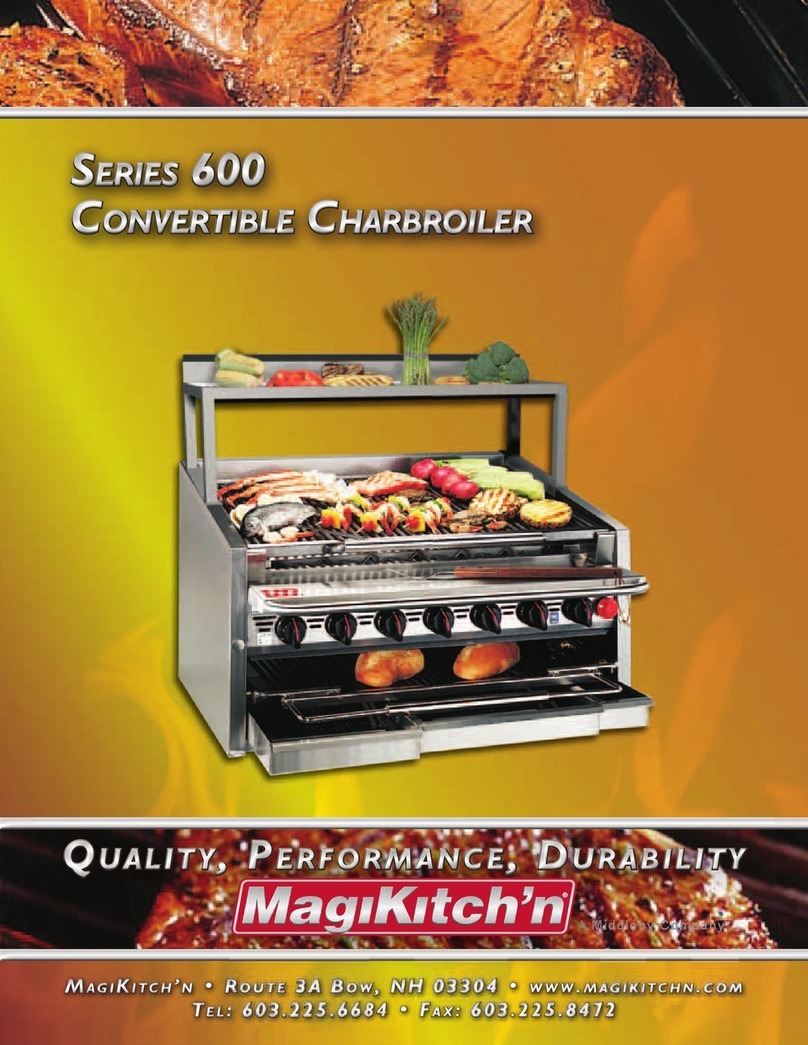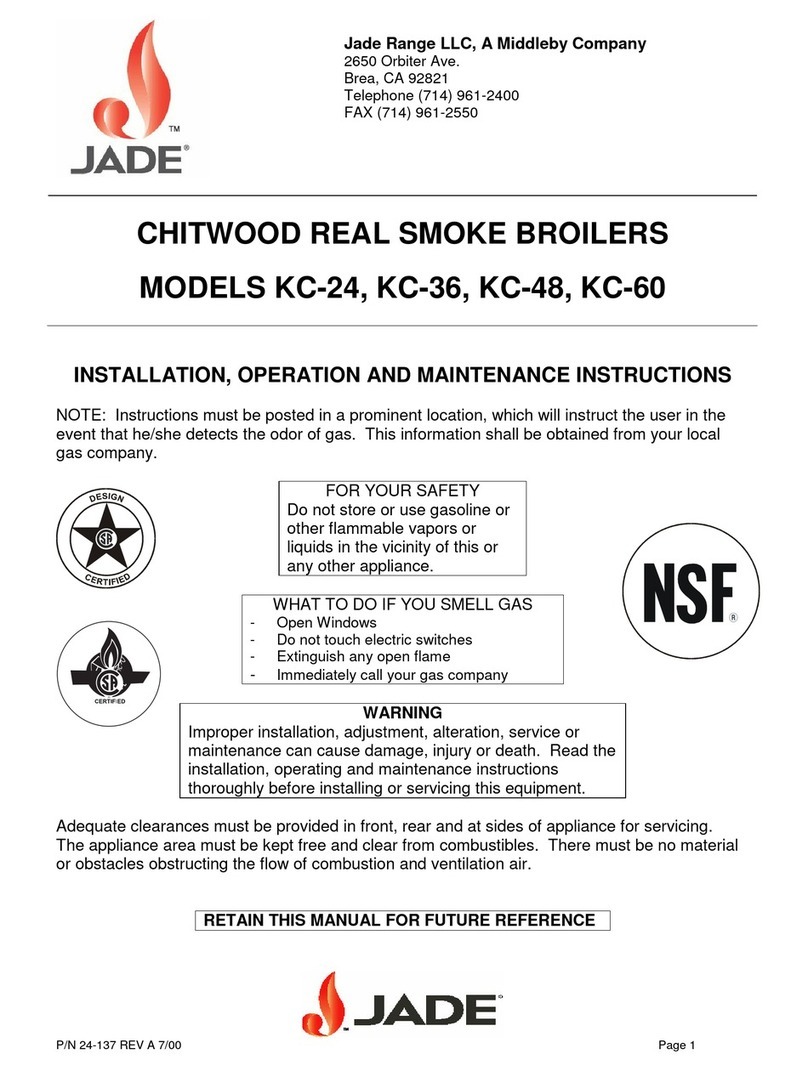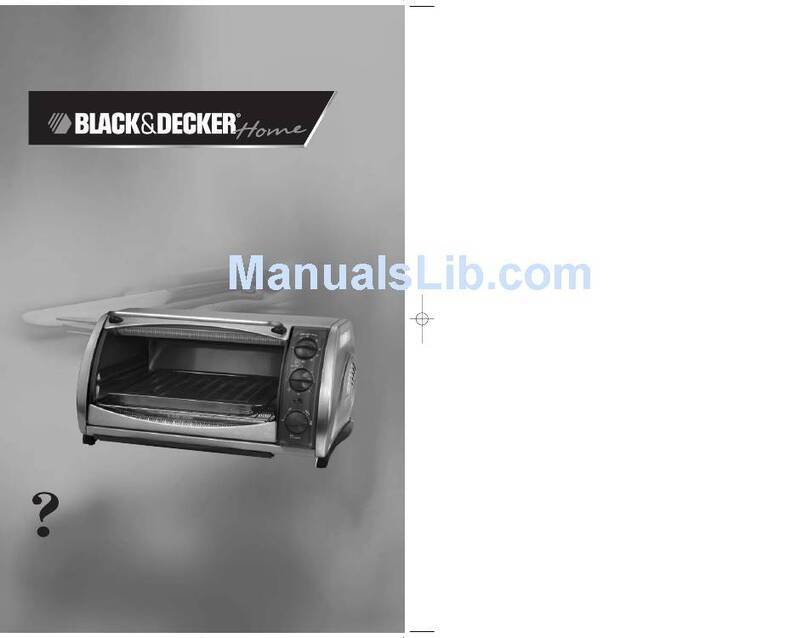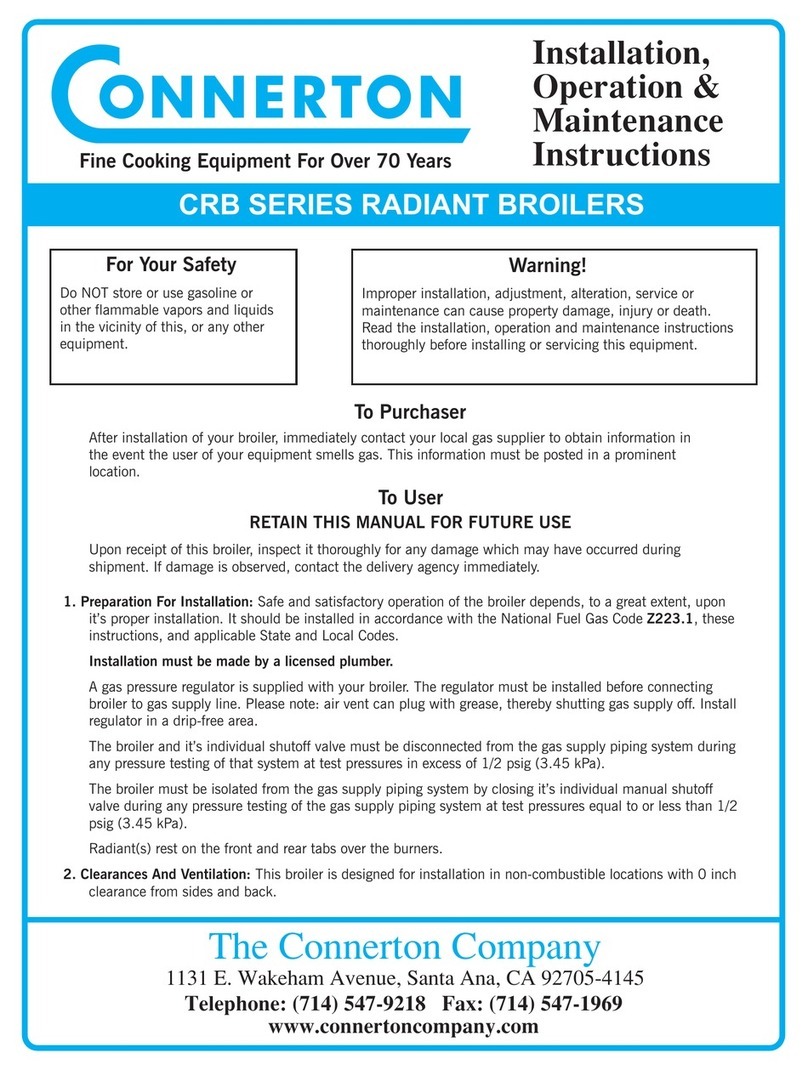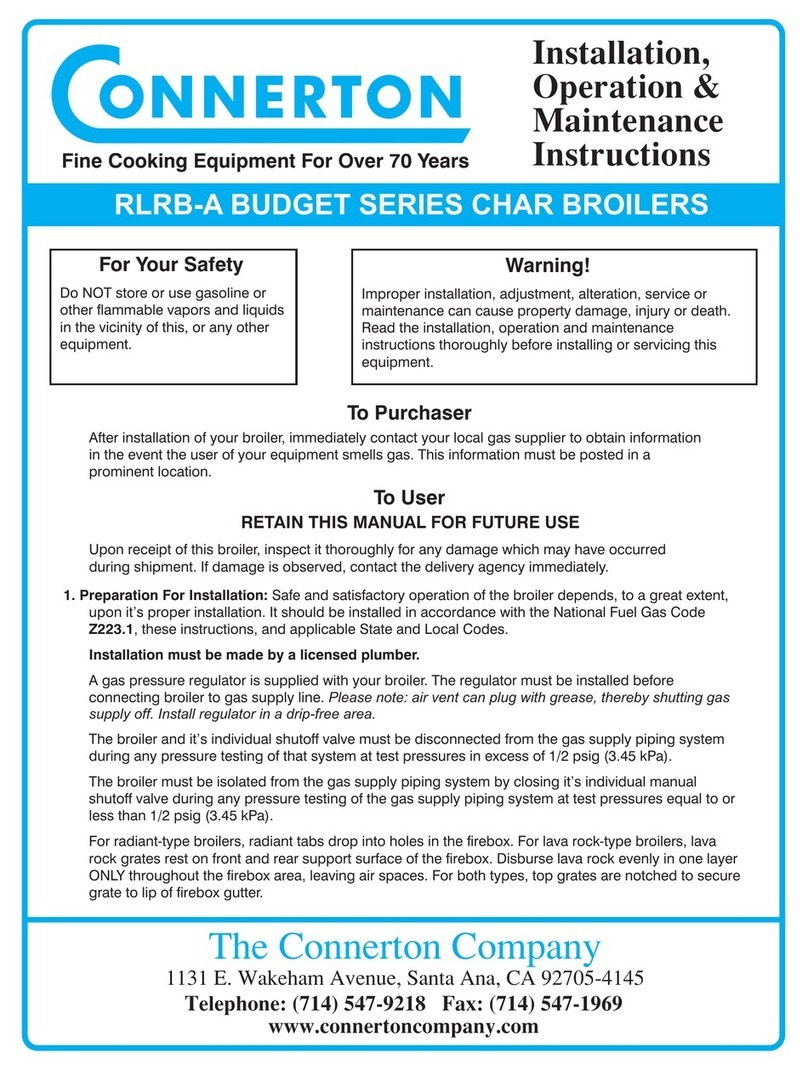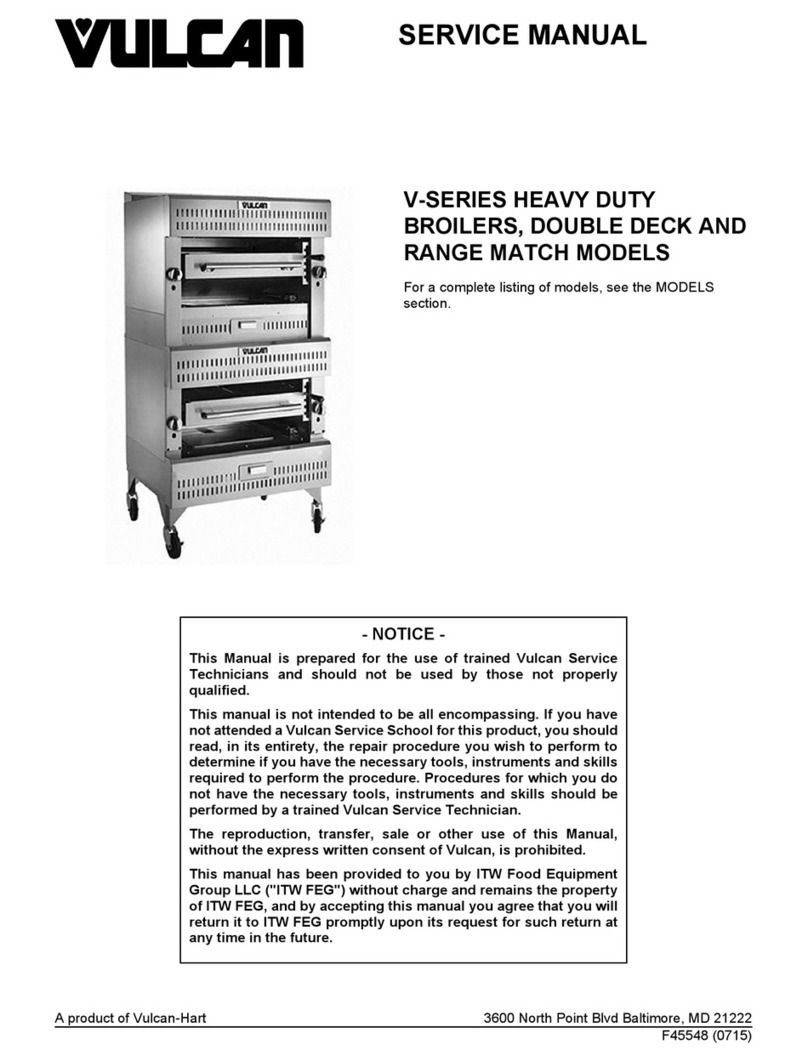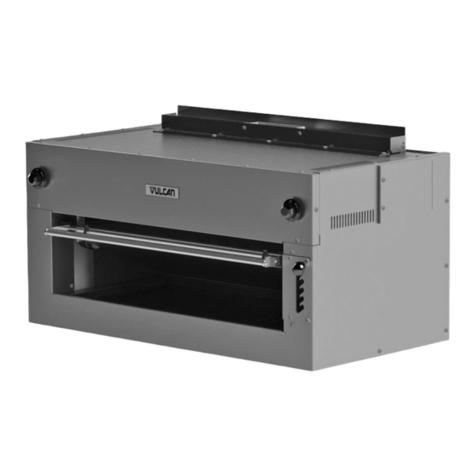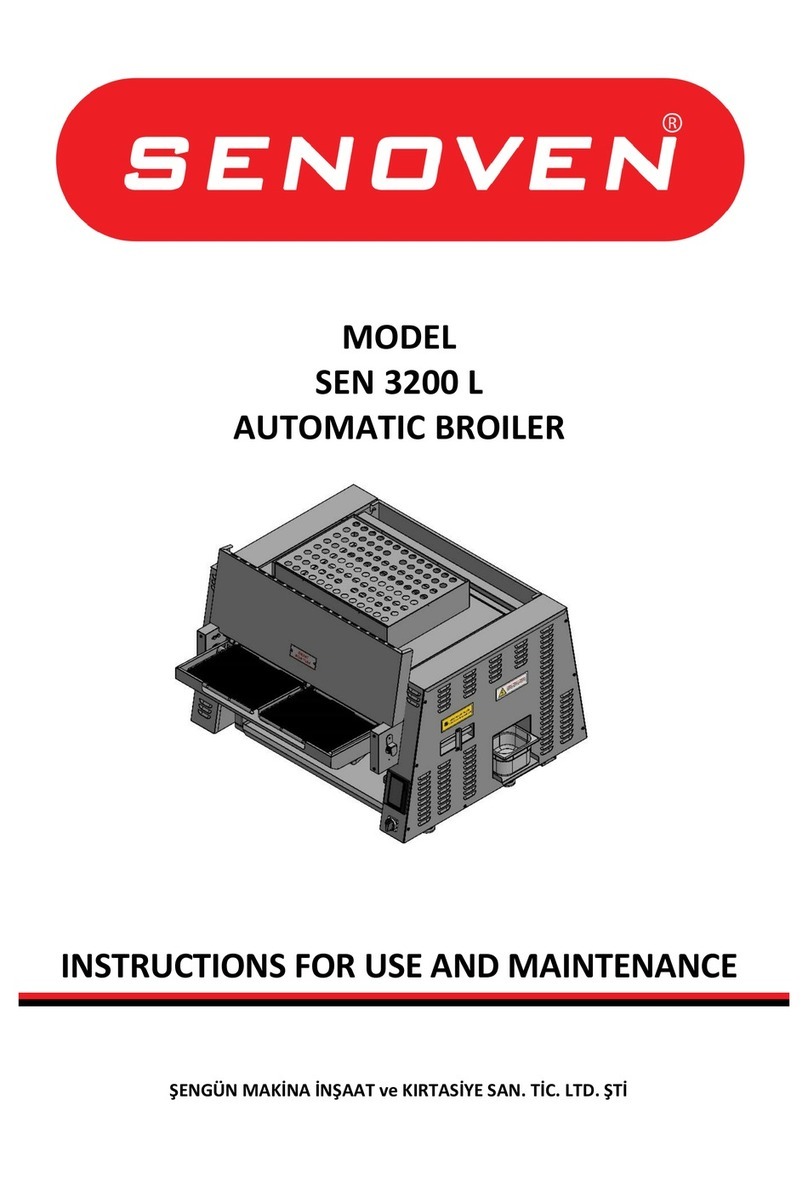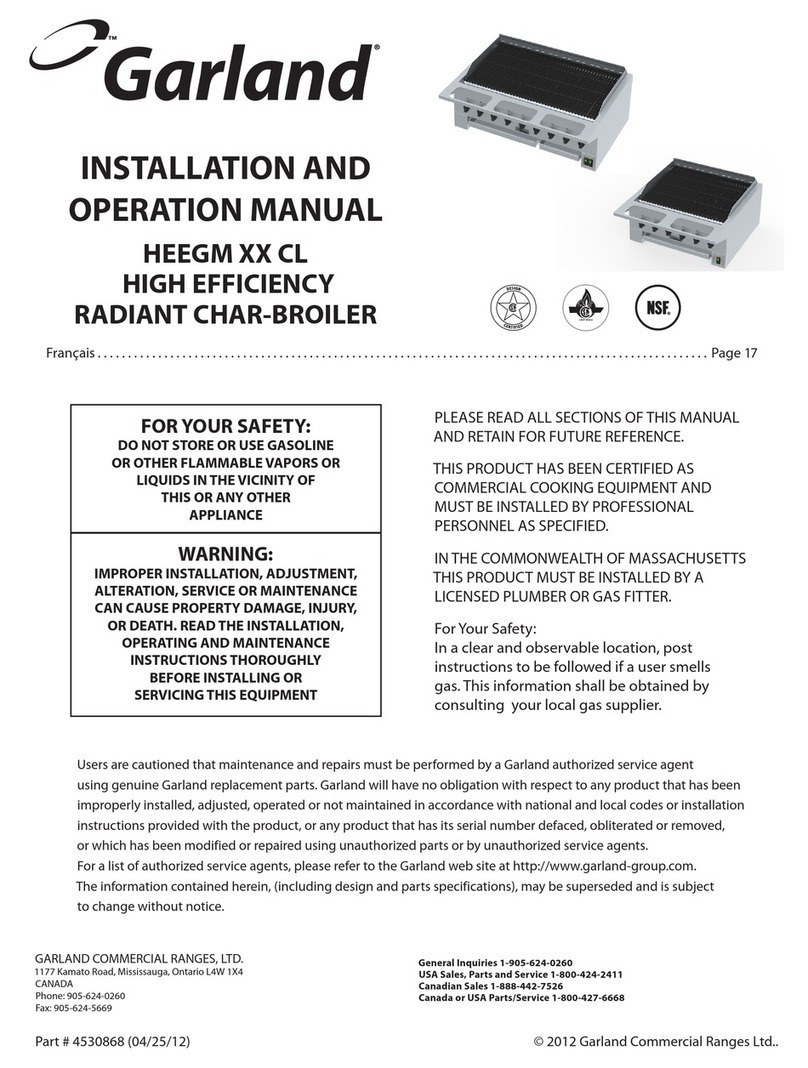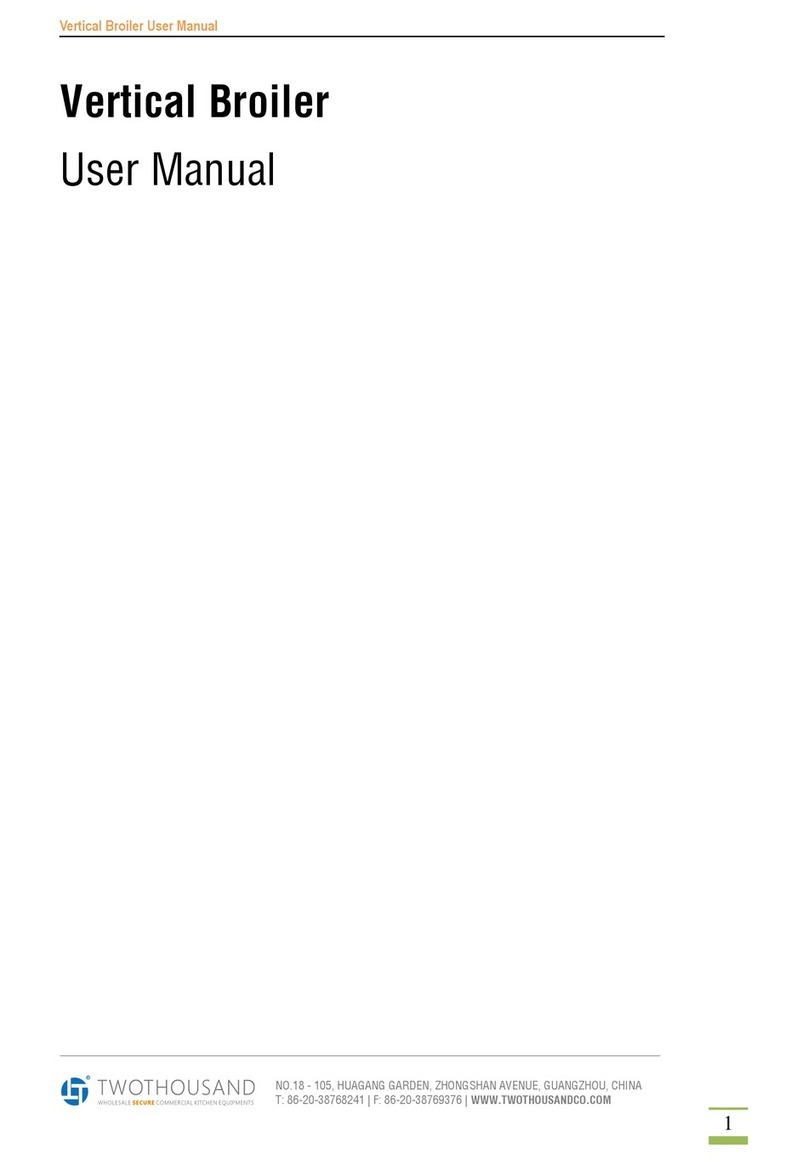
Ceramic radiants are boxed and placed in grease pan for shipment. Remove top griddle plate and
carefully place them over top burners like a saddle.
This appliance is design certified for installation on combustible floors and
adjacent to combustible walls. Minimum clearance from combustible construction; 6 inches from side
and 6 inches from back. 0 inch clearance sides and back for non-combustable locations.
The area in front of, and above the broiler must be clear to avoid obstruction of flow of combustion and
ventilation air. Means must be provided for adequate air supply and adequate clearance for air openings
into the combustion chamber.
Adequate clearances must be provided in front and sides of the broiler for servicing and proper
operation.
It is important that the broiler be installed under an exhaust hood which is adequate to remove the
products of combustion and cooking vapors. Sufficient make-up air must also be provided to the space
where the broiler is located to replace air removed through the exhaust hood.
Make sure the gas pressure regulator supplied with the broiler is installed correctly. Connect
outlet side of regulator to broiler. The regulator is set at 4 inch w.c. on natural gas and 11 inch w.c. on
propane gas. A 1/8” pressure tap is provided on the gas manifold at the front of the broiler for checking
the gas pressure.
Connect broiler to the gas supply line. Under no circumstances should the gas supply line be smaller
than the inlet pipe on the broiler. A gas shutoff valve must be installed in the gas supply line upstream of
the broiler for complete shutdown and service. Use pipe sealant on all pipe joints. Sealant must be
resistant to the action of L.P. gasses.
For proper performance, the broiler must be level. Adjusting feet are provided at the bottom of the legs.
Carefully level the broiler using “bubble” type level on top plate.
If the broiler is supplied with casters, the installation must be made with a connector that complies with
the Standard for Connectors For Moveable Gas Appliances ANSI Z21.69, and a quick-disconnect device
that complies with the Standard For Quick-Disconnect Devices For Use With Gas Fuel ANSI Z21.41.
Adequate means must be provided to limit the movement of the broiler without depending on the
connector and the quick-disconnect device or it’s associated piping to limit the broiler movement.
Restraining device should be connected to legs or back of body.
Turn gas valve and thermostat knob(s) located at the front of the broiler to “OFF”. Wait 5 minutes.
Turn valve knob marked lower to “ON”. Note: thermostat remains “OFF”.
Turn pilot lighter valve adjusting screw(s) counterclockwise and light pilots. Adjust flame height to
approximately ¼”.
To light top burners, turn valve knob marked upper to “ON”. To light bottom burners, turn thermostat
to desired temperature.
For complete shutdown, turn all gas valve knob(s) to “OFF” and turn pilot adjustment screw(s)
clockwise to shut off all gas supply to pilot light(s).
To relight, repeat above procedures.
Contact Factory, factory representative, or a local service company to perform maintenance and repairs.
2. Clearances And Ventilation:
Keep broiler area free and clear from combustibles.
3. Gas Piping:
Please note: air vent on regulator can plug with grease, thereby shutting gas
supply off. Install regulator in drip-free area.
IMPORTANT: Check all gas connections for leaks, using a soap and water solution.
DO NOT USE AN OPEN FLAME FOR CHECKING PURPOSES
4. Lighting And Relighting Of Broiler:
A.
B.
C.
D.
E.
F.
5. Care And Maintenance:
Please Note: Contact Factory before any warranty repairs are made.



